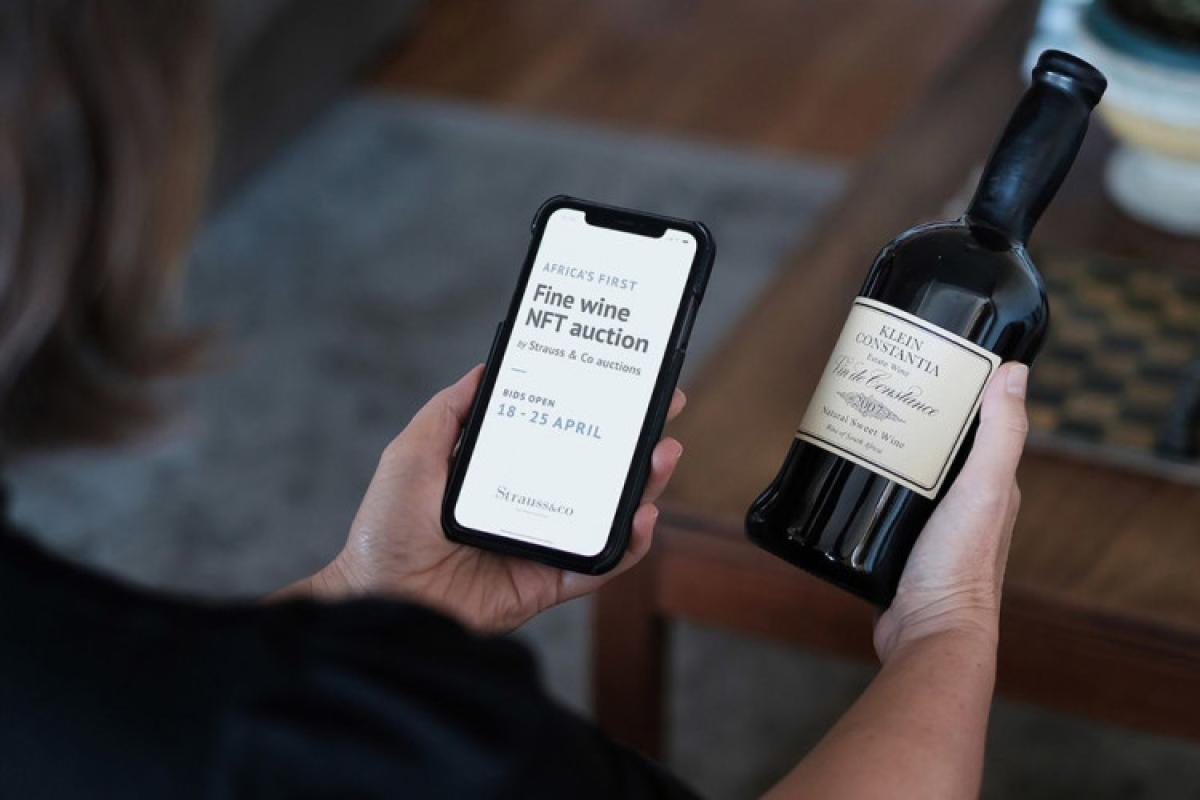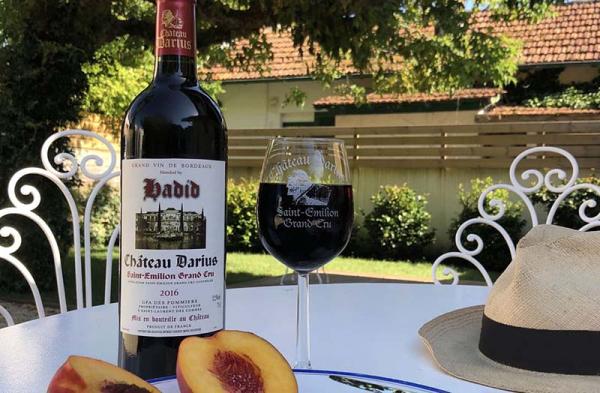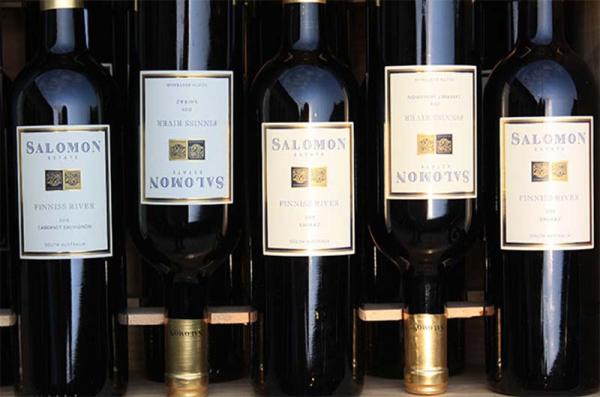NFT Wine: Just A Fad Or A Smart Investment?

NFTs (Non-Fungible Tokens) are individual digital tokens that serve as proof of authenticity and validation of ownership. These NFTs can represent virtual items (like digital artworks) as well as things in the real world (like wine bottles.)
NFTs have recently caught the attention of the wine world as an alternative method of bringing investment wines into non-traditional channels. NFT wines also offer winemakers access to new financial markets and customers. But are NFT wines a good investment?
NFTs: A Brief Background
The first NFT came out in 2014, but it only became mainstream around 2020-21, around the same time it caught the attention of the wine industry. Today, the NFT market is worth around $22 billion.
Here are a few examples of popular NFTs:
- The Angry Pitbull Club released a collection of 10,000 digital meme NFTs in 2021 and it sold out in 102 minutes. They donated $276,000 from the sales to the Best Friends Animal Society.
- In 2021 Dom Perignon, in collaboration with Lady Gaga, released 100 bottles of the limited edition wines via NFT. The wines included a Rosé 2006 and Dom Pérignon vintage 2010, both having received scores of 96 from the Wine Spectator.
How Are Wines Sold as NFTs?
Although the wine world has been using the blockchain for at least a decade, NFTs are fairly new to the industry. Wine NFTs are bought and sold on a digital NFT marketplace, such as BlockBar, WiV, and VinoDex. Winemakers attach NFTs to physical bottles or barrels of wine and put them up for sale on the platform (in the form of digital tokens.)
This allows wineries to place information about their winemaking on the blockchain, which makes up the digital token (NFT.) In other words, everything that happens to the wine grapes, from planting to bottling, can be specified on the NFT.
When you buy an NFT wine on one of these platforms, they are buying the digital token (NFT) as well as an actual bottle or barrel of wine. Some wine NFTs also include one of a kind digital artworks or invites to online tasting events.
10 Wineries Offering NFT Wines
Numerous winemakers have started offering wine NFTs, including the following.
1. Yao Family Wines
One of the first wine producers to start offering wine NFTs was Yao Family Wines from Napa Valley. In April 2021, the winery released 200 lots (a bottle with an NFT attached to it) of its 2016 Cabernet Sauvignon called “The Chop” in an online auction.
2. Penfolds
This iconic Australian winemaker offered its first wine NFTs in collaboration with the popular blockchain platform BlockBar. The release included 300 NFTs (the equivalent of a barrel) for $130,000.
The NFT identified each bottle with a barrel and bottle number. The actual bottles will be set-in limited-edition gift boxes and kept at BlockBar’s facility until redeemed by the buyers in October 2023.
3. Chateau Angelus
The French wine producer Château Angélus recently joined forces with the United Kingdom based wine investment firm Cult Wines to offer an NFT wine. The NFT sold for $110,000 and is linked to the ownership of:
- One barrel of Chateau Angelus 2020 Bordeaux En Primeur (225 liters or 300x 750ml bottles).
- An original 3D digital art piece of the estate’s logo.
- A virtual tasting with the CEO of Chateau Angélus.
4. Chateau Darius
Chateau Darius also dived into the world of NFTs, selling a collection of wine NFTs on the website BakerySwap for $417.38 each. Each NFT sold included a unique artwork, two physical bottles, and the opportunity to have the wine stored. According to Flavien Darius Pommier (the winery’s owner), selling wine NFTs would help to increase the popularity and accessibility of Chateau Darius wines.

5. Robert Mondavi Winery
Legendary winemaker Robert Mondavi has also entered the world of NFTs with the Robert Mondavi Winery x Bernardaud collection. The collection includes three magnum-sized porcelain bottles containing unique wine blends.
Each NFT carried a price tag of $3,500 and included artwork by artist Clay Heaton.
6. Màquina y Tabla
Spanish winery Màquina y Tabla sells wines En Primeur (wine futures) as NFTs to offer customers transparency and indicate chemicals used in the vineyard. Màquina y Tabla is 100% sustainably made, and the winemaker wanted to convey this information to buyers through a more reliable method than a simple sticker on a bottle.
Màquina y Tabla initially released one barrel of the 2020 wine futures for around $22 a bottle, which sold out in a few weeks.
7. Solomone Winery
Solomone Winery was one of the first Georgian producers to start selling wine NFTs as part of a national effort to increase the global popularity of Georgian wines. The winery sold 170 NFTs of its 2020 Dzelshavi (Qvevri Red) vintage at $150-300 each. Every wine NFT included a bottle of wine and an original piece of artwork.

8. Skipstone Winery
Skipstone Winery launched a wine NFT in collaboration with wine startup Yahyn, at an auction on the digital marketplace OpenSea. The NFT included a 6-liter bottle of the Oliver's Blend Cabernet Sauvignon, etched with a QR code linking back to the unique NFT.
9. Invivo Graham Norton Wine
New Zealand based Invivo Wines and Graham Norton released their NFT collection linked to the HE-DEVIL wine in 2021. Invivo released 10 HE-DEVIL tokens on OpenSea at approximately $300 each.
Each He Devil NFT included a first release wine bottle, a physical print of artwork signed by the Invivo cofounders, and membership to the Invivo Federation of Friends (IFF.) One of the NFTs included a surprise live virtual tasting experience with Graham Norton.
10. Grape Fam by Hello Fam
Hello Fam, founded by Adam Ghahramani and Tiffany Wong (from the Wine Spectator), helps 100+ wineries sell wines directly to consumers. Hello Fam recently launched the world’s first NFT wine club and winery - Grape Fam.
Consumers can buy a Grape Fam NFT, which includes a bottle of Syrah Blend from the Jezreel Valley Winery and a membership to the winery and the NFT wine club. The purchase also includes a tokenized ownership of one case (six 750ml bottles) of the Genesis Vintage 2021 wine release.
Advantages of NFT Wines (For Buyers and Winemakers)
Wine NFTs have benefits for both buyers and sellers. Let’s look at a few of them.
1. Advantages for Buyers
Here are a few benefits of wine NFTs for buyers:
Avoid Counterfeits: Wine NFT can help avoid counterfeits and fraud, which are rife in the wine industry. A 2016 report from the European Union Intellectual Property Office estimated that the production of fake wine and spirit drinks costs EU businesses around $1.3 billion a year.
An NFT is safe from tampering since it is linked to the blockchain. Real-world products sold as an NFT have a stamp of authenticity and a guarantee of provenance that isn't possible with regular transactions.
Transparency: Because everything in the blockchain can be scrutinized, from the use of chemicals in the vineyard to the number of barrels created, NFT transactions offer consumers more transparency. The alternative would be for consumers to rely on the wine bottle’s label, but this can easily be tampered with.
With an NFT, buyers have reliable proof of authenticity and ownership history.
2. Advantages for Winemakers
Here are a few benefits of wine NFTs for wine producers.
Attract a New Non-Traditional Market: One of the most significant advantages for wine producers is that selling wine NFTs can help them reach a new generation of tech-savvy professionals who may be new to wine collecting.
These potential buyers and wine collectors aren’t likely to purchase luxury wine bottles via the traditional channels, but they are likely to do so via new and emerging methods like NFTs.
Creative Marketing to Reach New Markets: Wine NFTs are an imaginative way for winemakers to market their products, giving them a cutting edge and helping them differentiate themselves. It also allows them to attach special bonuses to the NFTs like virtual tastings and digital art.
3. Winery Can Continue Making Money on the Secondary Market
NFTs also allow the winery or original issuer to continue to make money on the secondary market.
Using blockchains such as Ethereum, the NFT can be programmed to continue paying the winery or NFT creator a percentage of each secondary-market transaction. By cutting out the middle man from the initial transaction and paying a commission on subsequent sales, the NFT may generate ongoing income for the producer.
Current Disadvantages of NFT Wine
Here are some of the downsides associated with NFT wines.
1. Risk of NFT Wine Fraud
While wine NFTs can help combat the traditional forms of wine fraud, there is the risk of stolen or fake NFTs being attached to counterfeit bottles of wine.
In the past, artists’ images have been cut and pasted, and then offered for sale. For example, the Dutch artist Lois van Baarle found more than 100 counterfeits of her artworks for sale on OpenSea. If counterfeiting can be done with art, chances are wines can also be counterfeited.
2. Lack of Cryptocurrency Control and Regulation
Currently, exchanges that occur on the blockchain are unregulated. So if you use a digital wallet to convert your money into cryptocurrency, there's no guarantee that the cryptocurrency you're using has real value as it's not backed by any authority or government.
Additionally, more countries are cracking down on cryptocurrency. For example, China and eight other nations have banned cryptocurrencies completely. An additional 40 countries have limited the use of cryptocurrency, which could impact how wine NFTs are sold and bought.
3. Alarming Environmental Impact
Bitcoin and other cryptocurrencies are verified by using computers that 'mine' them. But the main drawback is that mining usually requires a lot of electricity. The Cambridge Center for Alternative Finance (CCAF), found that mining Bitcoin currently consumes around 130 Terawatt Hours per year.
According to a New York Times report, Austrian artist Chris Precht was shocked to discover how much energy the creation of 300 pieces of digital art would require. He was planning to sell the artworks as NFTs, but he realized it would require the same amount of electricity that the average person in Europe uses in over 20 years.
Other NFT Wine FAQs
Here are the answers to a few frequently asked questions about wine NFTs.
How Does an NFT Look?
A non fungible token (NFT) is a piece of unalterable data, a unique token on the blockchain that can be sold and traded on digital markets. This digital token can represent a digital item that only exists online or it could represent an item in the real world (like bottles or barrels of wine).
For example, with the Robert Mondavi wine NFT, each unique digital token in the NFT collection is a piece of generative artwork inspired by the wine bottle and the wine blends. Each digital artwork also acts as a “key” that unlocks the redemption of the physical wine bottles for shipping.
How Do You Purchase an NFT Wine?
Here’s a step-by-step guide on how to purchase wine NFTs:
- Set up a digital crypto wallet (like a digital checking account) on a platform, such as Coinbase, Electrum, Mycelium, or Crypto.com.
- Purchase Ethereum, Bitcoin, or similar cryptocurrency.
- Connect your wallet to a Non-Fungible Token marketplace like BlockBar (founded by Dov and Sam Falic), World Wide Wine, or Vinodex.
- Once connected, you can browse the marketplace for wine NFTs. If you want to make a purchase, you can use the cryptocurrency in your digital wallet.
- After you purchase the NFT and the exchange is complete, the NFT is transferred to your wallet.
Once Purchased, Where Will I Find My NFT?
Once you have purchased a wine NFT, you will be able to see it on the NFT marketplace where you made the purchase. If you’ve purchased a wine NFT attached to an actual bottle of wine, the bottle is usually stored in a facility until you request delivery. But conditions of sale will differ from one winery to the next.
What Do I Do If I Lose My Digital Wallet or Address?
When signing up for a digital wallet, you’ll be asked to provide a seed phrase (secret recovery phrase.) Make sure you store copies of this seed phrase in safe places in case you forget. If you forget your password and lose all copies of your seed phrase, you won’t be able to recover your wallet.
Ready To Invest in Wine NFTs Or Bottles?
The world of fine wine investing is constantly evolving, and wine NFTs are all the hype at present. But with the benefits of wine NFTs, there are a few downsides as well, and only time will tell whether wine NFTs are just a craze or here to stay.
About the Author
Anthony Zhang, is cofounder and CEO of Vinovest. Fine wine has long been a cornerstone of wealth generation and preservation. The problem: historically, it’s been reserved for the ultra-wealthy. Vinovest is changing that.
More By This Author:
Five Key Insights from Reviewing the Public Disclosures of 75 Leading Global Funds
Why Getting Risk Right is Wrong
Long-Term Private Equity Performance: 2000 To 2021



